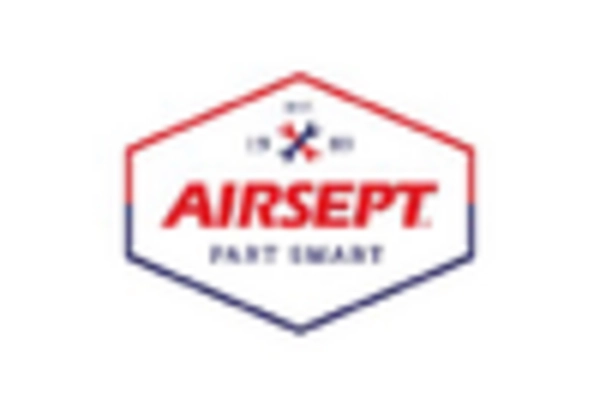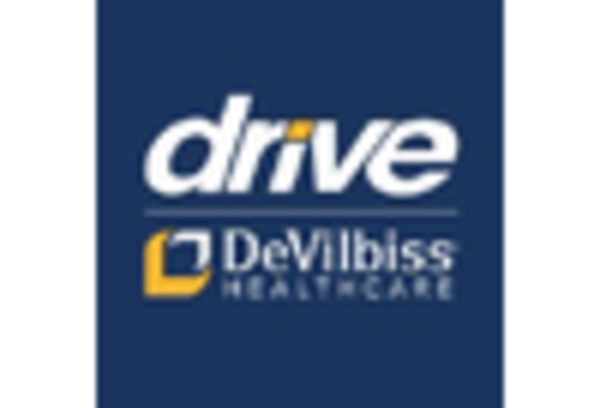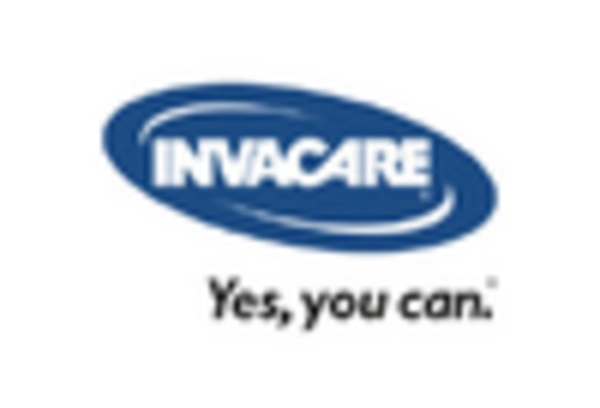Growing Awareness of Home Healthcare Solutions
There is a notable increase in awareness regarding home healthcare solutions within the GCC, which is positively impacting the medical oxygen-concentrators market. Patients and caregivers are increasingly recognizing the benefits of receiving care at home, including comfort and convenience. This shift is supported by healthcare policies promoting home-based care, which aim to reduce hospital readmissions and improve patient outcomes. As a result, the demand for portable and user-friendly medical oxygen-concentrators is on the rise. Market data suggests that the home healthcare segment is expected to grow by approximately 20% annually, indicating a robust opportunity for manufacturers and suppliers in the medical oxygen-concentrators market.
Increasing Prevalence of Respiratory Disorders
The rising incidence of respiratory disorders in the GCC region is a primary driver for the medical oxygen-concentrators market. Conditions such as chronic obstructive pulmonary disease (COPD) and asthma are becoming more prevalent, leading to a heightened demand for oxygen therapy solutions. According to recent health statistics, approximately 10% of the population in GCC countries suffers from some form of respiratory ailment. This trend is likely to continue, as urbanization and pollution levels increase, further exacerbating respiratory health issues. Consequently, healthcare providers are increasingly adopting medical oxygen-concentrators to meet the needs of patients requiring supplemental oxygen, thereby propelling market growth.
Aging Population and Increased Healthcare Needs
The demographic shift towards an aging population in the GCC is significantly influencing the medical oxygen-concentrators market. As individuals age, they often experience a decline in respiratory function, necessitating the use of oxygen therapy. Projections indicate that by 2030, the elderly population in the GCC will account for over 15% of the total population. This demographic change is expected to drive demand for medical oxygen-concentrators, as older adults are more likely to require long-term oxygen therapy. Healthcare systems are thus adapting to these needs by integrating advanced oxygen delivery systems into their services, which is likely to enhance the market landscape.
Technological Innovations in Oxygen Delivery Systems
Technological advancements in oxygen delivery systems are transforming the medical oxygen-concentrators market. Innovations such as portable concentrators, smart monitoring systems, and enhanced filtration technologies are making oxygen therapy more efficient and accessible. These advancements not only improve patient compliance but also expand the usability of oxygen concentrators in various settings, including home care and emergency services. The introduction of lightweight and battery-operated models is particularly appealing to consumers, as it enhances mobility and convenience. As manufacturers continue to invest in research and development, the market is likely to witness a surge in innovative products that cater to diverse patient needs.
Supportive Government Policies and Healthcare Investments
Supportive government policies and increased investments in healthcare infrastructure are driving the medical oxygen-concentrators market in the GCC. Governments are recognizing the importance of respiratory health and are implementing initiatives to improve access to oxygen therapy. This includes funding for healthcare facilities and subsidies for medical equipment, which facilitate the acquisition of oxygen concentrators. Additionally, public health campaigns aimed at educating the population about respiratory diseases and available treatments are gaining traction. As a result, the market is expected to benefit from enhanced accessibility and affordability of medical oxygen-concentrators, fostering growth in the coming years.

















Leave a Comment